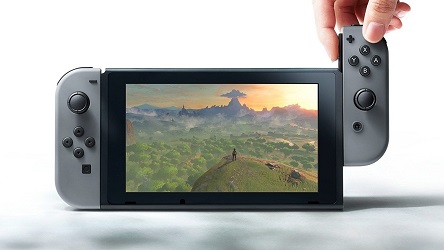You may find that the controls may not be as responsive as you want in Super Smash Bros. Ultimate for the Nintendo Switch. Fortunately, there are several potential solutions to help reduce lag between controller inputs and how fast your character reacts to your commands. You can check out our troubleshooting guide to help fix the Super Smash Bros. Ultimate input lag below.
Input lag in Smash Ultimate could occur due to your controller connectivity, television/monitor settings and/or internet connection. Let’s take a look at some potential solutions to these factors.
Super Smash Bros. Ultimate Wired vs. Wireless Controllers Input Lag
A wired connection is better than a wireless connection; thus, it should be no surprise that there are more input lag when playing SSBU with a wireless controller (rather with the Joy-Cons, Nintendo Switch Pro Controller or other Bluetooth options) when compared to wired gamepads. So, if you want to shave off the delay as much as possible, then you should get a wired controller.
So what are the best options in this case? Well, we highly recommend using a Gamecube controller as it still feels natural, especially if you played countless hours in Super Smash Bros. Melee, Super Smash Bros. Brawl and/or Super Smash Bros. for Wii U using the same pad. If you don’t have one, then you can purchase the Super Smash Bros. Ultimate Edition Gamecube Controller with this link on Amazon.
Of course, you can’t just connect the Gamecube pad to your Nintendo Switch as you will need a controller adapter. Fortunately, the same Gamecube Controller Adapter made for the Nintendo Wii U will work just fine on the Switch. If you don’t have one, however, you can purchase the official adapter via this page on Amazon.
Television and Monitor Input Lag
Another factor to consider when it comes to the input lag in Smash Bros. Ultimate is what screen you are playing it on. Some television sets and gaming monitors have more input delays than others. A few TVs also come with a Game Mode where input lag could be reduced as well.
So, if the controls in Super Smash Bros. Ultimate don’t feel quite as responsive as they should be, then you should try messing with the settings on your screen (and also make sure you have the latest firmware installed on your TV) or try another screen altogether.
Super Smash Bros. Ultimate Ethernet vs. Wi-Fi Online Lag
The Super Smash Bros. Ultimate input lag will get considerably worst when playing online matches. This is because the Nintendo Switch is only capable of using a Wi-Fi connection right out of the box. Depending on how strong the wireless signals are for you and your opponent, the online fights can end up getting quite choppy and laggy.
If you insist on using a wireless connection when connecting to the internet in SSBU, we recommend putting your system as close to the epicenter of the Wi-Fi signal as possible (Nintendo officially recommends a range of somewhere between 10 to 15 feet). Furthermore, make sure that there aren’t any metal objects or electronic devices that would weakened your signal from within the range. If there are, remove them so that you can get the most optimal Wi-Fi connection possible.
As we mentioned above, however, a wired connection beats out a wireless one as not only is Ethernet faster, but it is also more stable when compared to Wi-Fi. So it should not be too surprising to learn that Nintendo previously highly recommend using a wired Ethernet/LAN adapter to play the Super Smash Bros. Ultimate online modes.
The Nintendo Switch currently supports both USB 2.0 and USB 3.0 Ethernet/LAN adapters; however, the speed is currently capped to USB 2.0 even if use the USB 3.0 adapters. With that said, we still recommend getting the USB 3.0 adapters for future-proofing purposes as Nintendo has the ability to update the Switch system with USB 3.0 support via a firmware patch in the future. Not to mention that the USB 3.0 adapters provide faster speeds while being comparable in price to the USB 2.0 adapters.
In terms of brands, we recommend taking a look at the products from AmazonBasics, Plugable, TRENDnet and UGREEN. Below, you can find our list of Nintendo Switch compatible USB 3.0 Ethernet/LAN adapters on Amazon:
- AmazonBasics USB 3.0 to 10/100/1000 Gigabit Ethernet Adapter
- Plugable USB 3.0 to Ethernet Gigabit 10/100/1000 LAN Network Adapter
- TRENDnet USB 3.0 to Gigabit Ethernet LAN Wired Network Adapter
- UGREEN Network Adapter USB 3.0 to Ethernet LAN Gigabit Adapter
Recap
In order to reduce the input lag in Super Smash Bros. Ultimate, we highly recommend using a GameCube controller with the Gamecube adapter. For online play, you will definitely benefit by using an USB 3.0 Ethernet/LAN adapter for a wired connection. Last but not least, you should also try changing the settings on your screen and/or get a new display.
Hopefully, the aforementioned fixes will help reduce the input lag as much as possible in Smash Ultimate.


